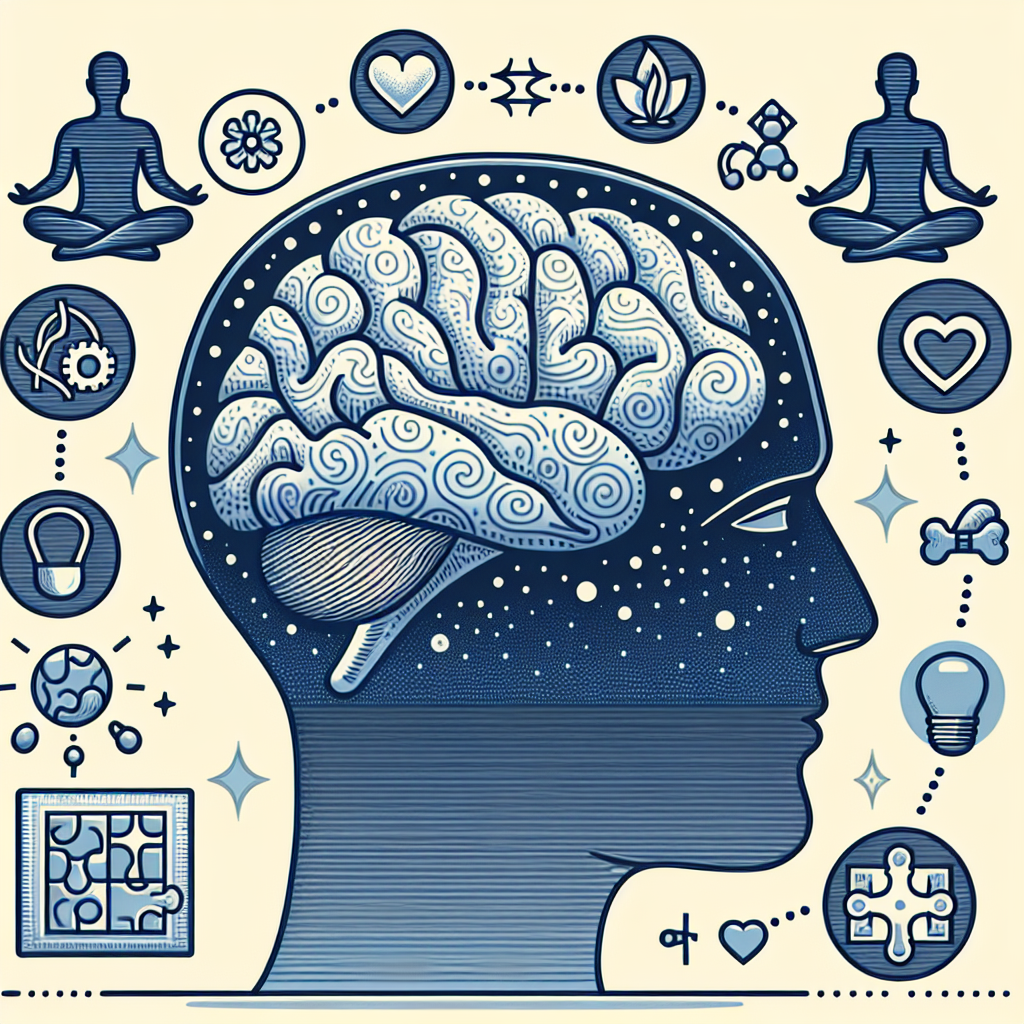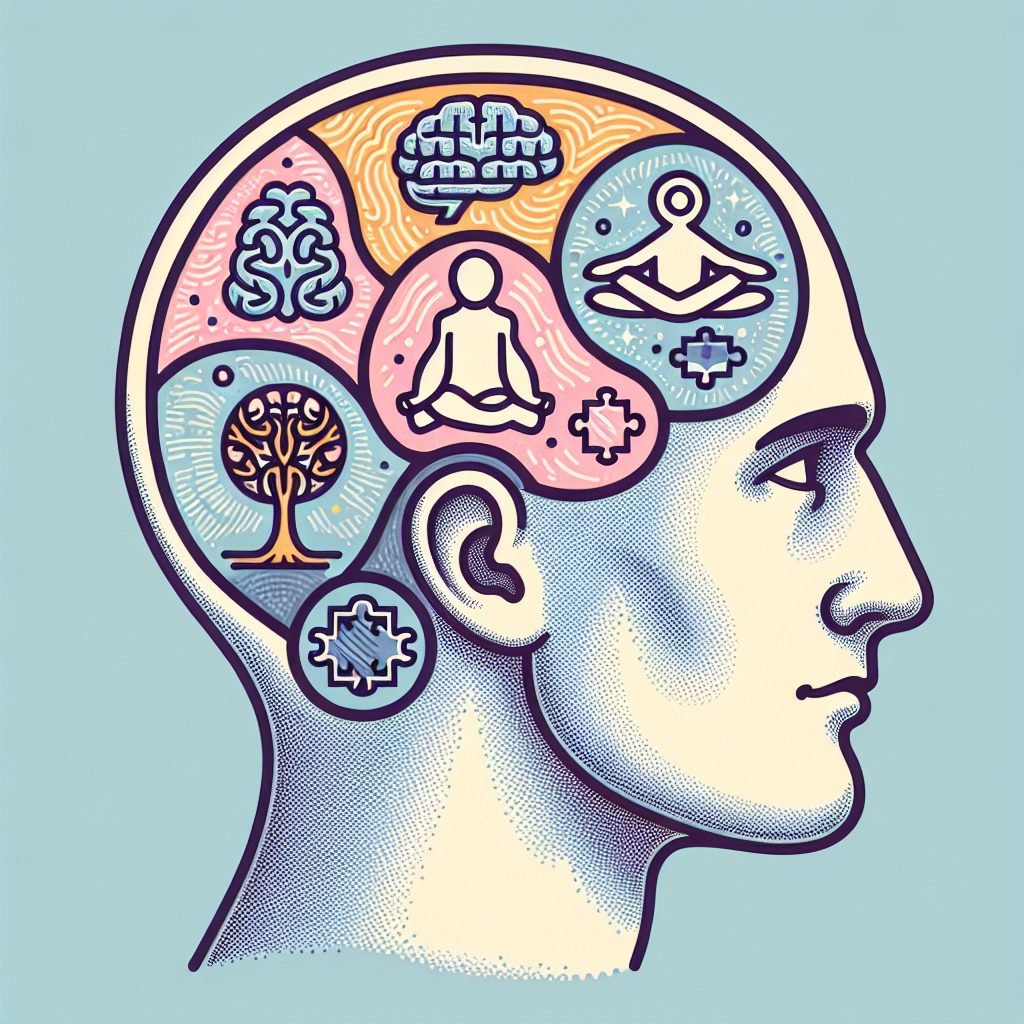Are There Any Specific Brain Training Exercises That Can Assist In Managing Stress And Anxiety?
Imagine living a life where stress and anxiety are managed with the agility of a seasoned athlete, all thanks to specific brain training exercises. This article covers such techniques that can transform your mental health game by reshaping how your mind responds to stressors, using the power of neuroscience to bring about peace and balance in your life. Glide through your daily life with fewer emotional bumps and bruises as you gain the upper hand over anxiety and stress, all without popping a single pill.

Understanding Stress and Anxiety
Understanding stress and anxiety is the first step to effective management and recovery. Stress and anxiety, although often used interchangeably, have distinct definitions and effects on your brain.
Definition of Stress and Anxiety
In simple terms, stress can be defined as a natural physical and mental reaction to life experiences. It’s that rush of adrenaline that you feel when faced with danger or challenges. Anxiety, on the other hand, is an intense, persistent and excessive worry and fear about everyday situations.
The effects of stress on the brain
Stress can have a significant impact on your brain, especially if it’s prolonged. When you are stressed, your brain releases stress hormones, which prepare your body to face danger. However, prolonged exposure to these hormones can have adverse effects on the brain’s structure and function, including changes in mood regulation, memory, and decision-making.
The effects of anxiety on the brain
Anxiety, likewise, can negatively affect your brain. For instance, excessive worry or fear can trigger your fight-or-flight response, putting your body in a state of hyperarousal. Over time, this can lead to a reduction in the size of certain parts of the brain that are involved in memory and cognitive function.
Importance of Brain Training in Managing Stress and Anxiety
Brain training is a vital part of managing stress and anxiety. It includes a variety of exercises designed to improve cognitive abilities such as memory, attention, and critical thinking.
Health benefits of Brain Training
Brain training has several health benefits. It can enhance memory recall, improve concentration, boost problem-solving skills, and promote better overall brain health. It also helps reduce the risk of cognitive decline and stave off conditions like Alzheimer’s disease.
Role of Brain Training in stress and anxiety management
Brain training plays a vital role in managing stress and anxiety by helping to build resilience, improve mental agility, and create a healthy and balanced mind. It enhances your ability to process, understand, and deal with stress and anxiety in healthier ways.
Core Elements of Effective Brain Training
Effective brain training programs are built upon three core elements: enhancing memory, improving attention, and promoting critical thinking.
Memory Enhancement
Memory enhancement techniques are designed to improve your ability to recall and retain information. They involve exercises that stimulate the hippocampus, the part of the brain responsible for forming, organizing, and storing memories.
Attention improvement
Attention improvement exercises help you improve your focus, minimize distractions, and stay attentive to tasks. They involve activities that require high levels of focus and mental agility.
Critical Thinking Enhancement
Critical thinking enhancement techniques aim to better your ability to evaluate and analyze information. It involves training your brain to process information quickly, make connections between different ideas, and develop problem-solving skills.

Specific Brain Training Exercises for Stress Management
Stress can be overwhelming, but certain brain training exercises can help you manage it effectively.
Deep Breathing Exercises
Deep breathing exercises can help you manage stress by calming your mind and body. By focusing on your breath, you train your brain to shift its attention away from stressors and bring your body back to a relaxed state.
Mindfulness Training
Mindfulness training, which involves focusing your attention on the present moment, can also be quite effective. It helps you become more aware of your emotions, thoughts, and bodily sensations, offering a more balanced perspective on stressful events.
Visualization Exercises
Visualization exercises involve creating mental images of calming and positive scenarios. It aids in stress management by activating the same regions of the brain you would use when actually experiencing these scenarios, creating a sense of peace and relaxation.
Specific Brain Training Exercises for Managing Anxiety
Certain brain training exercises can also be highly beneficial in managing anxiety.
Cognitive Behavioral Therapy (CBT) techniques
CBT techniques can be an effective option. They involve identifying negative thought patterns and retraining your brain to respond differently to anxiety-provoking situations.
Desensitization methods
Desensitization methods, which involve repeated exposure to anxiety-provoking scenarios until they no longer elicit anxiety, can be quite useful.
Yoga and meditation as brain exercises
Lastly, yoga and meditation have shown to be very effective in managing anxiety. These exercises involve controlled movements and focused breathing, which can help calm your mind and relieve anxiety.
Potential Challenges in Implementing Brain Training Exercises
Brain training isn’t without challenges. Below are some potential obstacles you might face and ways to overcome them.
Dealing with Lack of motivation
Lack of motivation can sometimes make it difficult to initiate or sustain brain training exercises. It’s essential to set achievable goals, find exercises you enjoy, and persevere even when progress seems slow.
Handling Resurgence of stress and anxiety symptoms
Sometimes, despite your best efforts, stress and anxiety symptoms might resurface. It’s crucial to persist and understand that recovery is not always linear. Regular practice and adjustments based on your needs can go a long way in ensuring success.
Working through physical constraints
Physical issues like chronic pain or disability might make certain exercises challenging. Collaborating with a professional can help identify alternatives and adaptations suitable for your specific situation.
Monitoring and Evaluating Progress
Tracking your progress is essential in any brain training program.
Establishing a Baseline for Future Comparison
Firstly, establishing baseline values for various aspects of your cognitive function can be useful. It gives you a standard of comparison for assessing progress.
Setting tangible goals and expectations
Setting clear, tangible goals provides you with a target to aim for. Whether it’s improving memory recall or reducing anxiety attacks, these goals can give your training purpose.
Creating a tracking system and routine check-ins
Maintaining a tracking system where you record your exercises, progress, and any challenges you face can be useful. Periodic check-ins can help gauge whether you’re moving closer to your goals.
Understanding the signs of progress
Finally, understanding the signs of progress, such as improved cognition or reduced anxiety, can provide valuable feedback.
Overcoming Plateaus in Brain Training
Progress in brain training may not always follow a linear pattern, and at times, you may reach a plateau.
Identifying a plateau
A plateau can be identified when you’ve stopped making progress despite practicing consistently. This might be evident as your performance in exercises doesn’t improve or feelings of stress and anxiety aren’t subsiding.
Techniques for breaking through plateaus
To break through these plateaus, you might need to adjust your approach, switch up your exercises, or simply give yourself time.
Seeking professional help
Professional assistance can be very beneficial in overcoming plateaus through customized strategies and guidance.
Incorporating Brain Training Exercises into Your Daily Schedule
Implementing regular brain training requires making it part of your daily routine.
Finding the optimal time for brain training
Everyone has different peak times for cognitive performance. Experiment to find when you’re most alert and have least distractions – this could be an ideal time for your brain training exercises.
Making brain training a routine
Making brain training a daily routine reinforces the habit. By scheduling regular sessions, just like you would for physical exercise, you can easily integrate this into your lifestyle.
Involving loved ones in the process
Get your loved ones involved in your brain training regimen. It can make the activities more fun, provide extra motivation, and you might find it beneficial to discuss your progress and challenges with them.
Professional Assistance with Brain Training
Professional assistance can be incredibly beneficial in your brain training journey.
Choosing the right professional for one’s needs
It’s important to find a professional who specializes in brain training and cognitive enhancement. They will be able to tailor a program to your needs and guide you through each exercise.
What to expect in a brain training session with a professional
In a professional brain training session, you can expect to go through a variety of exercises, receive feedback on your performance, and discuss any difficulties you’re facing.
The long-term benefits of professional support
Long-term benefits of professional support include improved cognitive performance, reduced stress and anxiety, and essential strategies and techniques you can use beyond the sessions.
Whether you’re dealing with stress, anxiety, or just want to improve your cognitive health, brain training exercises can make a significant difference in your life. Remember, as with any new exercise program, starting gradually and enjoying the process can lead to lasting, beneficial changes.

